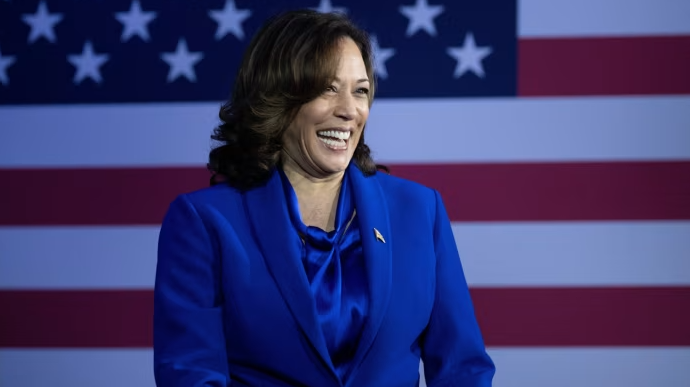Kamala, an American Story (Facts for Prelims)

Introduction:
- In the volatile landscape of U.S. politics, significant events can drastically alter the electoral dynamics within a short period.
- The past two weeks have witnessed an attempted assassination of former President Donald Trump, the compelled resignation of sitting President Joe Biden, and the swift nomination of Vice President Kamala Harris as the Democratic Party's presidential candidate.
- These developments have injected fresh energy into the upcoming November elections, transforming the race into a fierce contest of political ideologies and turning it into a pivotal moment for American democracy.
Kamala’s Indian Roots:
- Kamala Harris's heritage bridges two continents, reflecting her unique position in American politics.
- Her mother, Shyamala Gopalan, emigrated from Tamil Nadu, India, to the United States to pursue higher education at the University of California, Berkeley.
- There, she met and married Donald Jasper Harris, a Jamaican economist.
- Following their separation, Kamala was primarily raised by her mother, who instilled in her a strong sense of cultural identity and social justice.
Kamala Harris’s Indian Roots: Beyond Superficial:
- The Indian media's focus on Harris's heritage underscores a broader trend of celebrating diasporic achievements.
- However, this focus can overshadow the critical examination of her political beliefs and policies.
- India's diaspora success stories are becoming commonplace, and personal anecdotes about cultural preferences, such as food, should not distract from the substantive political discourse.
- Harris's rise reflects the multicultural fabric of American society and exemplifies the rapid success of immigrants.
- Her education at Howard University, a historically Black institution, signifies her deep connection to African American culture and activism, highlighting the intersectionality of her identity.
Beyond Identity Politics:
- Reducing Harris's political identity to her ethnic background simplifies her broader significance.
- Critics often label her as a figurehead of left-wing identity politics, emphasizing diversity, equity, and inclusion (DEI).
- This characterization overlooks her comprehensive political impact and the hope she represents for the Democratic Party.
- Harris’s nomination revitalizes the Democratic campaign, offering a realistic chance of success in a challenging election.
- Her potential to lead the U.S. at this critical juncture could have profound implications both domestically and internationally, reinforcing the liberal political trend in the country.
Biden’s Abdication and Harris’s Ascension:
- The political landscape shifted dramatically with three key events: an assassination attempt on Trump, Biden’s declining public performance, and his eventual resignation under party pressure.
- Despite Biden’s initial resistance, he endorsed Kamala Harris, leading to her swift nomination to prevent internal party conflict.
- This expedited process, occurring just three months before the November election, highlights the urgency and strategic maneuvering within the Democratic Party.
Political Chess Game Between Democrats and Republicans:
- Republicans have condemned the Democrats for orchestrating what they term a "coup" against Biden, accusing them of undemocratically coronating Harris.
- Despite this, Harris's nomination has invigorated the Democratic campaign, positioning her as a dynamic contender against Trump.
- The age contrast between Harris, 59, and Trump, 78, has bolstered the Democrats’ appeal to younger voters.
- However, Harris’s liberal policies might alienate some conservative voters, particularly on issues like border control and immigration.
- Her ability to balance these concerns while energizing the Democratic base will be crucial.
Conclusion:
- Kamala Harris faces the challenge of appealing to the socially conservative working class in key battleground states.
- Her success hinges on her ability to move towards the political center and counter Trump’s narrative of her as a "crazy San Francisco liberal."
- Her leadership presents an opportunity to reshape the American political landscape, promoting a liberal agenda while addressing the concerns of a diverse electorate.
- The upcoming election will be a test of her ability to unify the party and appeal to a broad spectrum of voters, ultimately determining her place in American history.


